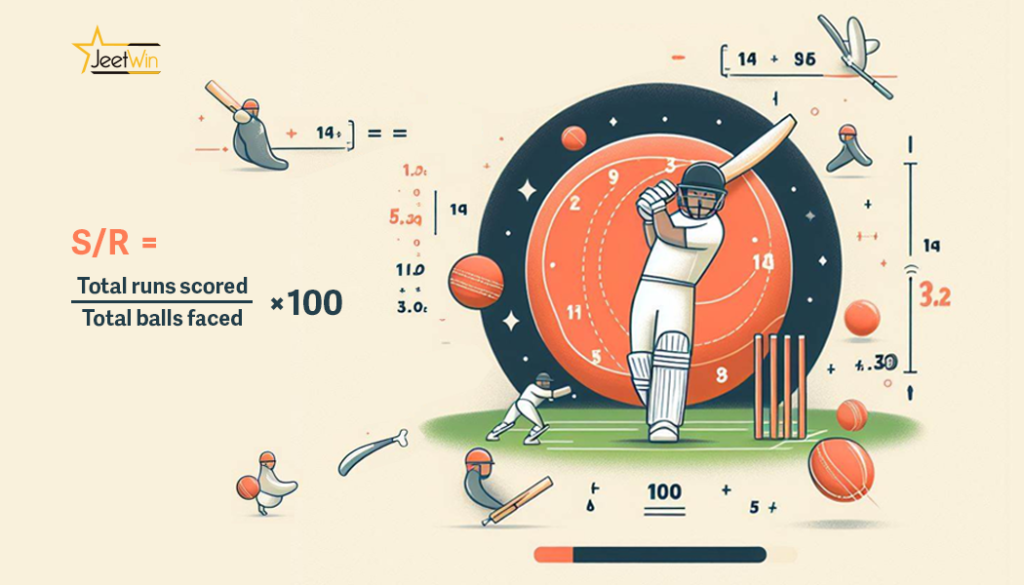Strike rate is a unique term that is widely used in the world of cricket. Given that cricket is a sport that is heavily associated with scores and numbers. It is why, knowing the strike rate is equally important in understanding the cricket’s score points. In that regard, we aim to enlighten “how is strike rate calculated in cricket?”
What is Strike Rate?
The strike rate has different meanings in the fields of bowling and batting in cricket, but it is a means of gauging performance. With such measurement, we identify the success of a bowler and batsman in terms of their effectiveness in doing their respective roles over time. Overall, the significance of their impact on the sport of cricket.
How much does a cricket stump cost and who bears the price?
What is the Batting Strike Rate in Cricket?
Batting strike rate is a measurement used to assess how quickly a batsman can deliver score runs in the game of cricket. Additionally, it is a calculation of runs scored per 100 overs faced by a batsman. Considering this definition, a batsman who has a higher strike rate score is seen as an aggressive cricket player. On the other hand, a batsman who has a lower strike rate score is s perceived to always be in a defensive position.
How is the batting Strike Rate calculated in cricket?
The batting strike rate of a batsman is calculated by multiplying the number of runs scored by 100 and dividing it by the ball faced. In simple terms, this is the sample formula, the Batting Strike Rate is = (Runs Scored x 100) ÷ Balls Faced. These are the steps on how is strike rate calculated in cricket, especially in the batting category.
Example of Batting Strike Rate Computation:
Let us say the batsman has scored 150 runs in 50 balls, the strike rate would be 300. In short, this shows that in 150(runs scored) x100 = 15,000/50(ball faced) = 300. Therefore, the batsman scored runs at a strike rate of 300 per ball faced.
What is the bowling Strike Rate in Cricket?
A bowling strike rate is used to assess how often a bowler can secure a wicket. It is one way to measure the efficiency of bowlers’ performance in cricket. In general, a bowling strike indicates how frequently a bowler can take a wicket. Considering that definition, a low bowling strike rate is regarded as better because the bowler takes wickets with greater frequency. In the end, it is a matter of a low bowling strike rate, because the lower, the better the wicket-taking ability of a bowler means.
How is the Bowling Strike Rate Calculated?
The bowling strike rate is calculated by dividing the balls bowled into wickets taken, and you will get the score. In simple terms, the basic formula is as follows, Bowling Strike Rate = Balls Bowled ÷ Wickets Taken, once you follow it, the answer will be given shortly to you. These are the steps on how is strike rate calculated in cricket, especially in the bowling category.
Example of Bowling Strike Rate Computation:
Let us assume the bowler has bowled 400 balls and has taken 20 wickets in cricket sport, their strike rate score would be 20. In short, this shows that in 400 (balls) / 20 (wickets) = 20. Therefore, the bowler scored 20 strike rates on average. If a lowered number, the better would be the entire bowling strike rate.
Why bet IPL 2024 with JeetWin?
Visit JeetWin today and register with us. We offer sports betting on tournaments like IPL, T20 and other form of sports betting opportunities to explore. Exciting prizes are to be given away once your sports wagers win! JeetWin also has casino games, live dealer games, and many more gaming opportunities that you can enter to play. Play with us today and win!
In addition, follow our blog posts for more IPL, sports, and casino-related content, and you will be guided. Subscribe to us now! In no time, you will be updated about the latest news, promotions, and games of JeetWin.
Why Strike Rate is important in Cricket ?
Strike Rate is an important measurement in cricket. It has a vital role since it helps us to determine a player’s competence and ability on the field. For example, when we measure the batting strike rate of a batsman, it allows us to know how effective a batting player is. Whereas to bowling strike rate of a bowler allows us to know how skilled a bowler he is.
Depending on the role you want to measure, the strike rate is used to quantify the player’s effectiveness in both bowling and batting. Understanding and knowing the strike rates in bowling and batting of a player helps the cricket team to strategize their playing performances on the field. Others used this information to acquire knowledge about a specific batsman or bowler. This is to have an idea about their skills and effectiveness as a player of cricket.
Furthermore, cricket experts analyzed strike rate information to determine a batsman’s capability to flip a game in his team’s favor. On the other hand, the bowler’s strike rate information is used to measure their capacity to do impressive bowling on the cricket field. Therefore, if you aim to determine a bowler and batsman’s ability in playing cricket, a strike rate measurement can be used at any time to give you a deeper analysis, understanding, and guidance on how a cricketer performs well. Especially at the moment of crucial playing circumstances.
Is lottery legal in India? Here’s what you need to know.
Conclusion:
In general, the strike rate stands as a fundamental metric in cricket. It reflects a batsman’s ability to score runs and a bowler’s ability to secure wickets. Therefore, its impact on the game should not be undervalued by all means. Since it helps every cricket team to strategize and shape the abilities of every batsman and bowler they have. Ultimately, it serves as a gauge of players’ ability and effectiveness in the ever-growing landscape of cricket. As cricket continues to grow, as well as the proficiency of its players. This is why the strike rate is crucial to measure their abilities.
Overall, we hope you get all the information you want to know, especially how is strike rate calculated in cricket under the bowling and batting categories.



